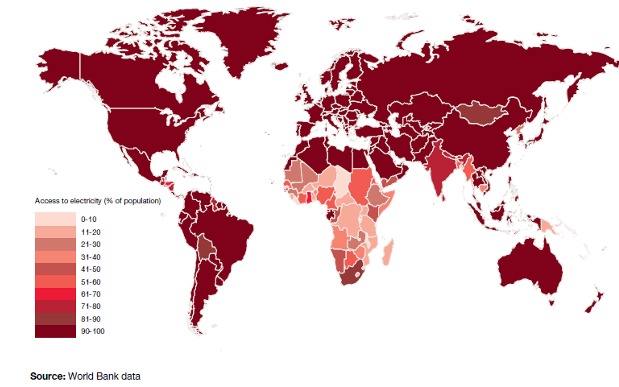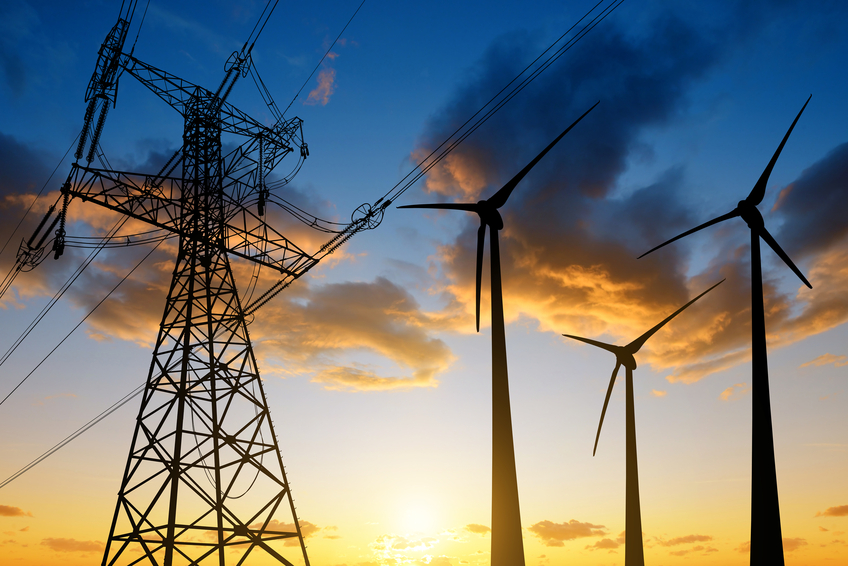Rob Gramlich, senior vice president for government and public affairs at the American Wind Energy Association (AWEA), spent six weeks in East Africa working with wind companies and local utilities on wind energy opportunities and challenges, including grid integration in the region.
Gramlich chose this region due to its strong wind resource but general lack of wind energy advocacy and information available to governments and utilities, compared to other regions. The following is the first in a series of stories outlining the massive market for electricity in East Africa.
Commanding significant financial support and attention from governments and development organizations such as the World Bank and International Finance Corp., electricity access has always been a development priority.
That attention is only increasing as development proceeds in East Africa: For example, light bulbs in homes are reducing dependence on expensive and unsafe kerosene; there is an increasingly high penetration of mobile phones; and communications, refrigeration, heating, cooling and other services important for both households and businesses are only increasing in popularity.
East Africa is a prime example of the need for electricity expansion. Three of the bottom six countries on the International Energy Agency’s Energy Development Index are major countries of East Africa – Ethiopia, Kenya and Tanzania – meaning people have less electricity access than anywhere else in the world.
Two-thirds of Sub-Saharan Africans – about 600 million people – have no electricity whatsoever (out of 1.4 billion people globally without access). In addition, only 24% of Tanzanians have access. Notably, there is also a lot of room to grow the usage of those who have access; a typical American uses 40 times the electricity of a typical Tanzanian.
Electricity provides a foundation for development across the economy. Electric pumping provides access to drinking water and irrigation for farming to increase yields and feed more people. Electric lights are used in education and training – in turn, building a workforce for electricity-related industries. In addition, public lighting also improves safety in the evenings. Hospitals and health facilities can also do more with electricity. So, other development objectives in the region are not necessarily competing for limited development resources; they feed into support for electricity expansion.
Electricity also has some potential to reduce the health impacts of biomass-based cooking, seeing as 80% of Sub-Saharan Africans rely on biomass for cooking. Electricity is one possible solution for this particular need, though other options, such as efficient cook stoves, are more direct. Indoor air pollution causes 400,000 premature deaths in Sub-Saharan Africa, and 1.45 million people die prematurely per year globally due to inefficient biomass cooking – usually, children in homes. These numbers are expected to rise to be a top global health threat, while threats from AIDS, malaria and tuberculosis are expected to fall.
Given these benefits, electricity consumption is likely to grow significantly in East Africa. Corresponding to gross domestic product growth, demand has been very high in recent years.
For example, in 2003, only 285 public secondary schools in Kenya had electricity. Ten years later, 100% of the 8,436 schools were connected.
Can wind energy serve this growing market?
There is a very strong wind resource that is cost-competitive with all other forms of generation, and the utilities have shown an interest in recent times to sign long-term power purchase agreements.
But will there be demand? Can they afford it? Again, evidence indicates that electricity use is going to grow in the region – and that bodes well for wind energy. We will investigate further as the series continues.





